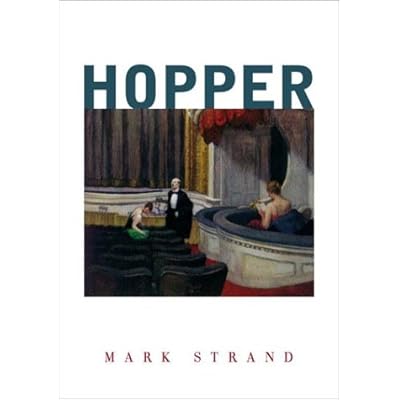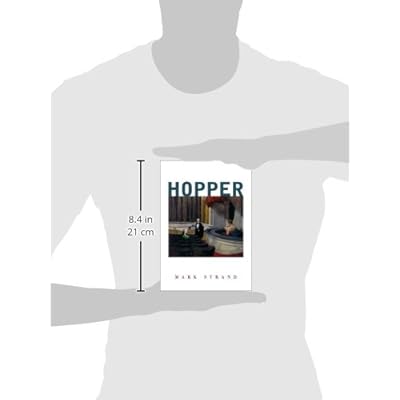Hopper
Category: Books,Arts & Photography,History & Criticism
Hopper Details
Review "Mark Strand looks more deeply into Hopper's pictures than anyone else has before."--Adam Gopnik"Strand takes the poet's entrance into the silent world of Hopper with a gift of words that allows painter and poet to become partners in opening the windows of the imagination."--Wayne Theibaud"Strand's perceptions are intuitive and visceral. I recommend this strange and wonderful book to anyone interested in Hopper's work."--Justin Spring, Artforum Read more From the Back Cover "Mark Strand looks more deeply into Hopper's pictures than anyone else has before."--Adam Gopnik"Strand takes the poet's entrance into the silent world of Hopper with a gift of words that allows painter and poet to become partners in opening the windows of the imagination."--Wayne Theibaud"Strand's perceptions are intuitive and visceral. I recommend this strange and wonderful book to anyone interested in Hopper's work."--Justin Spring, Artforum Read more See all Editorial Reviews

Reviews
Mark Strand is a prose poet extraordinaire who I enjoy in reading his insightful prose in f poetic form. When I saw that he had a book in which he reviews the works of my most favorite American artist in Edward Hopper, I just had to delve into this work. Strand notes Hopper's use of light in all his painting, something that I was well aware of before I read this book. He expands on Hopper's use of light and his use of painting of subjects that are inside and in many cases looking onto the outside world. Many of the people used in Hopper's paintings are looking outward outside the canvas sightlines which Strand notes on many of the paintings where the human subject is prevalent. He notes the total indifference of the subjects in the painting in which they are concerned only in their world. Strand also notes that Hopper uses in his paintings the mysteries of what lies beyond his triangular spatial picture. One always looks at a Hopper painting and wonders what lies beyond the art we see in front of us. The lines which lead down the road of things not seen in the painting prove to be a mystery which Hopper creates. Just what does lie beyond the sight lines of the painting? The way Hopper uses light, his constant creation of looking from the outside inward and the sense of solitude are explained in detail by Strand. With Strand, we can look at the paintings of Hopper in a visceral form and see the uses of light, loneliness and a complete sense of calmness and solitude. Hopper uses the basic tenants of everyday life and shows to all that solitude and introspective thought in a good and calming way of viewing life in general. Strand studies the simplest nuances of Hopper's offerings and simply tells a basic and good way of looking at art. Strand does this without the extravagant intellectual exercises which neither helps the art student nor serves to merely confuse the student in the real intentions offered by the artist. Mark Strand breaks down the basics of the art style in which Hopper had developed over much of the 20th century. We see from Strand the innermost workings of the mindset of a great American artist.



